2021 Rolls-Royce Ghost: First Impressions
The British marque has always represented perfection and the quintessence of the car in the collective imagination of the people. But is it still so? To find out, we tested its most recent offering for thousands of kilometres – the 2021 Rolls-Royce Ghost.
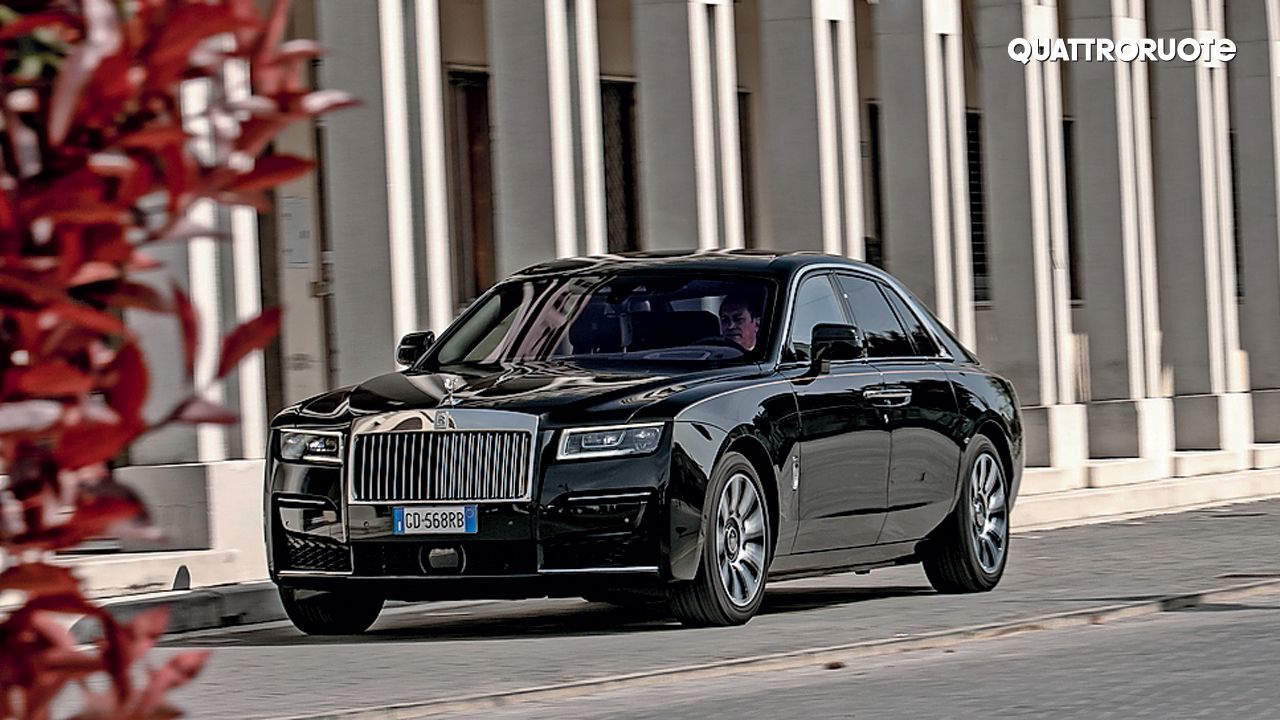
The British marque has always represented perfection and the quintessence of the car in the collective imagination of the people. But is it still so? To find out, we tested its most recent offering for thousands of kilometres, passing through two Italian cities that, at different times, have in turn been the quintessence of development.
The Ghost. You look at it, and the first thing you think of is its price. And you inevitably ask yourself the same old question – does it make sense to spend so much money on a four-door sedan? And the response…well, it also remains immutably and invariably the same – there is no answer, nor can there be because the question assumes that it doesn’t. And when you consider the fact that its optional extras cost as much as the Porsche 911, it definitely doesn’t seem justified at all.
But those who buy a Rolls do so because they want to make a statement, one that screams to the world that ‘I’ve made it big in the world, and I deserve to join the exclusive club of the few.’ By the way, sales have never been so strong in 116 years of Rolls Royce’s history as they are today, thanks to the Cullinan SUV, which has opened new markets for the brand. Coming back to where we were…yes, in short, Rolls cars are a symbol.
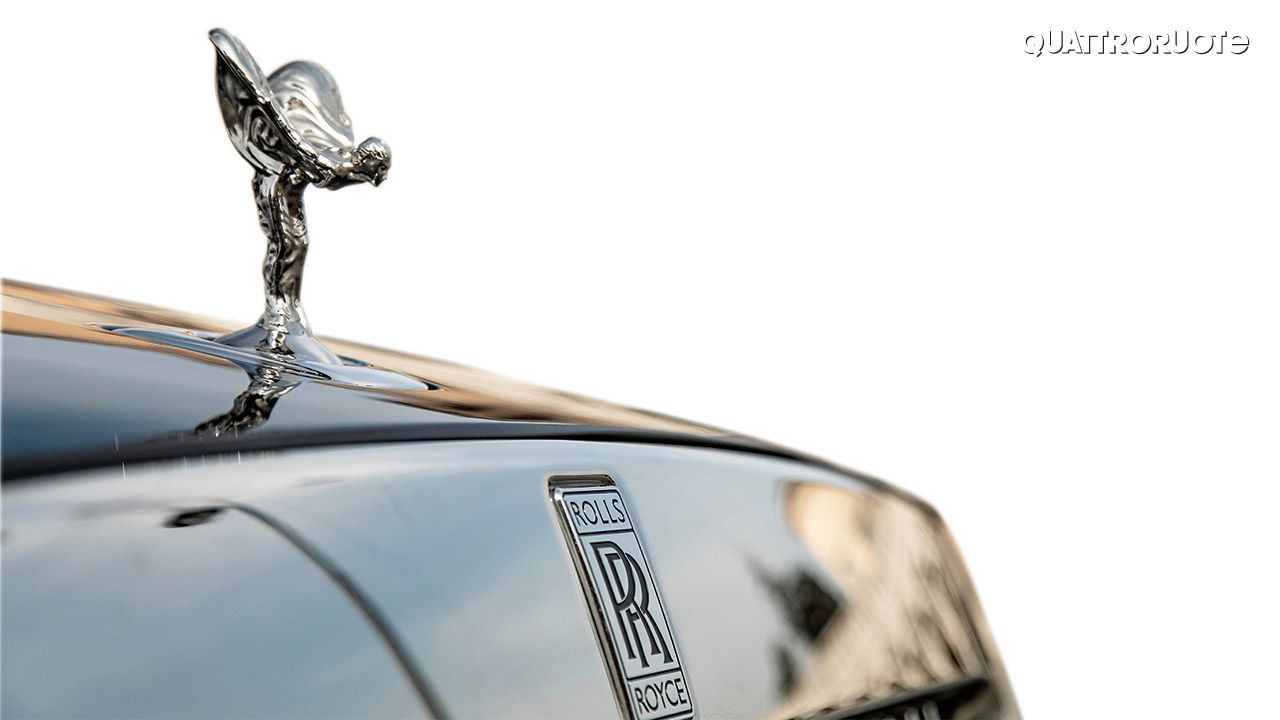
Now, we often tend to underestimate the concrete aspects of symbols because their intangible essence is so predominant in the common perception that it discourages any objective consideration. And it’s a pity because Rolls cars no longer cling to the idea of immutability and have so much content that they deserve an objective analysis, which should go beyond the intangibility surrounding them, the atmospheres they evoke, and the imaginative suggestions they inspire.
And for this very reason, we wanted to test the new second-gen Ghost – the first-gen was released in 2009. We wanted to understand if, despite its exorbitant price, it really is the exemplification of the technical excellence that everyone instinctively credits to the brand, to the point of transforming it into a metaphor of perfection – an exalted status similar to what Cadillac enjoys in America.
Immune to Stress
We didn’t take the Ghost on our track for testing. Out of respect, you ask? Well, yeah – the Spirit of Ecstasy (for years equipped with an anti-theft system that is very effective in keeping souvenir hunters away: if you move it too forcefully, it disappears into the hood) continues to impose a reverential fear that is difficult to escape. But there are also more technical reasons.
Evaluating a car like the Ghost, which has been designed for a very specific use – the company is keen to point out that the Ghost can also be driven by the owner; the suggestion being that it’s a car that’s meant to be chauffeured – using numbers and figures seems to be a misleading, and perhaps contradictory, exercise. Also, circuit tests are used to assess a car in mechanically stressful conditions. And if there is a car that will never know what stress is, it’s the Ghost.
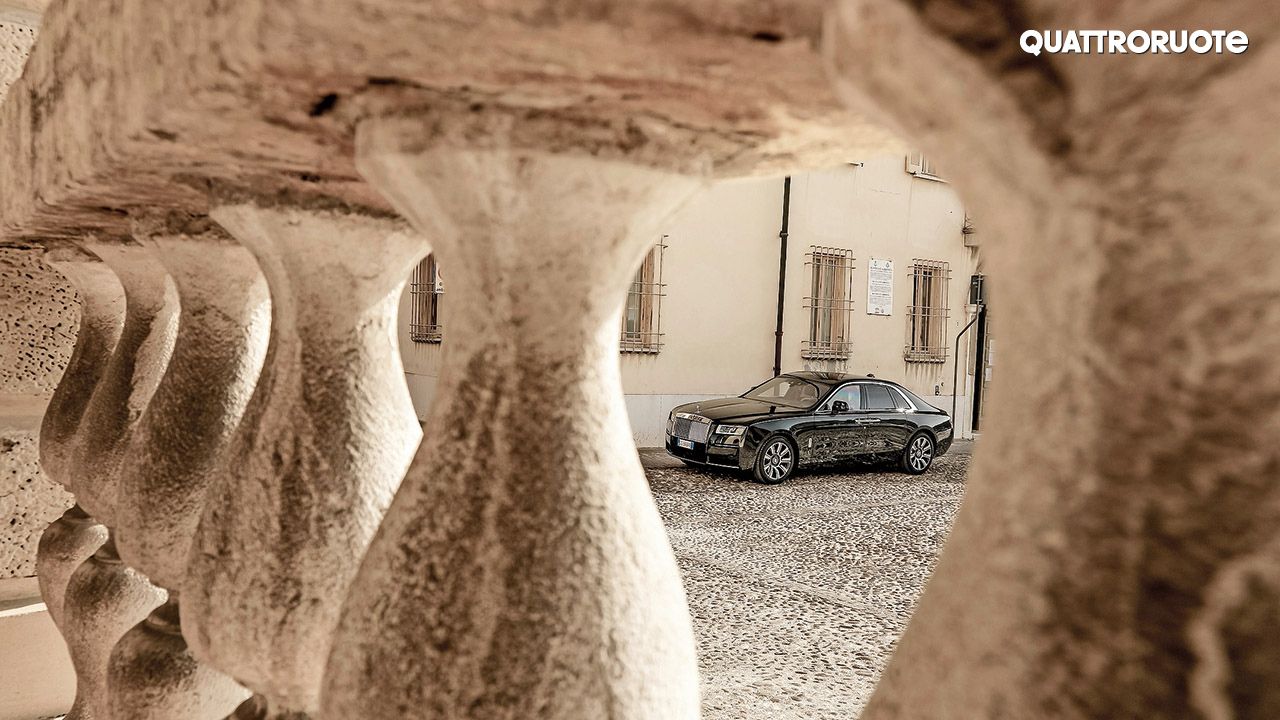
It’s a car that advances majestically, never losing itself in the frenzy of aggression or excitement. To make it perform a lane change in wet conditions would be as meaningless as measuring the off-road capabilities of the Huracán. And checking whether it can do the 0 – 100km/h sprint in five seconds or so would be a redundantly technical exercise, for no one would have the bad taste to try it in everyday use.
So, naturally, the only place to test it was the road. And for customary photography, we decided to head towards two towns, which, like Rolls, epitomise the idea of perfection – Sabbioneta, a small town in the province of Mantua, Italy, and Tresigallo, a town that was transformed by a Fascist minister in the 30s into something that seems to have come out of De Chirico’s paintings.
But before we get into the journey, let’s take a look at the Ghost because Rolls are not often written about. The new Ghost, until recently, was based on the same platform that underpins the BMW 7 Series – the British marque has belonged to the Bavarian group since 2003, after a dispute with VW, which in the end kept the Bentley half of the company. But, now, it’s built on an aluminium platform called the Architecture of Luxury, which it shares with the Phantom and the Cullinan.
It weighs two and a half tonnes and is five and a half metres long, which it tries to conceal with a coupe-style tail. It’s powered by a twin-turbo 6.75-litre V12 from BMW – the same as the one in the Cullinan. Perhaps to be dismissive of a future dominated by battery packs, it features no electric aid – unusual in this day and age!
As for the maximum power output, gone are those days when in Crewe (the historic headquarters of Rolls-Royce), they hid behind the haughty claim of ‘adequate sufficiency’ to nonchalantly allude to a handcrafted construction – and perhaps not to legitimize comparisons that could have been embarrassing. Today’s regulations require everything to be revealed, so we know that the V12 offers 563bhp.
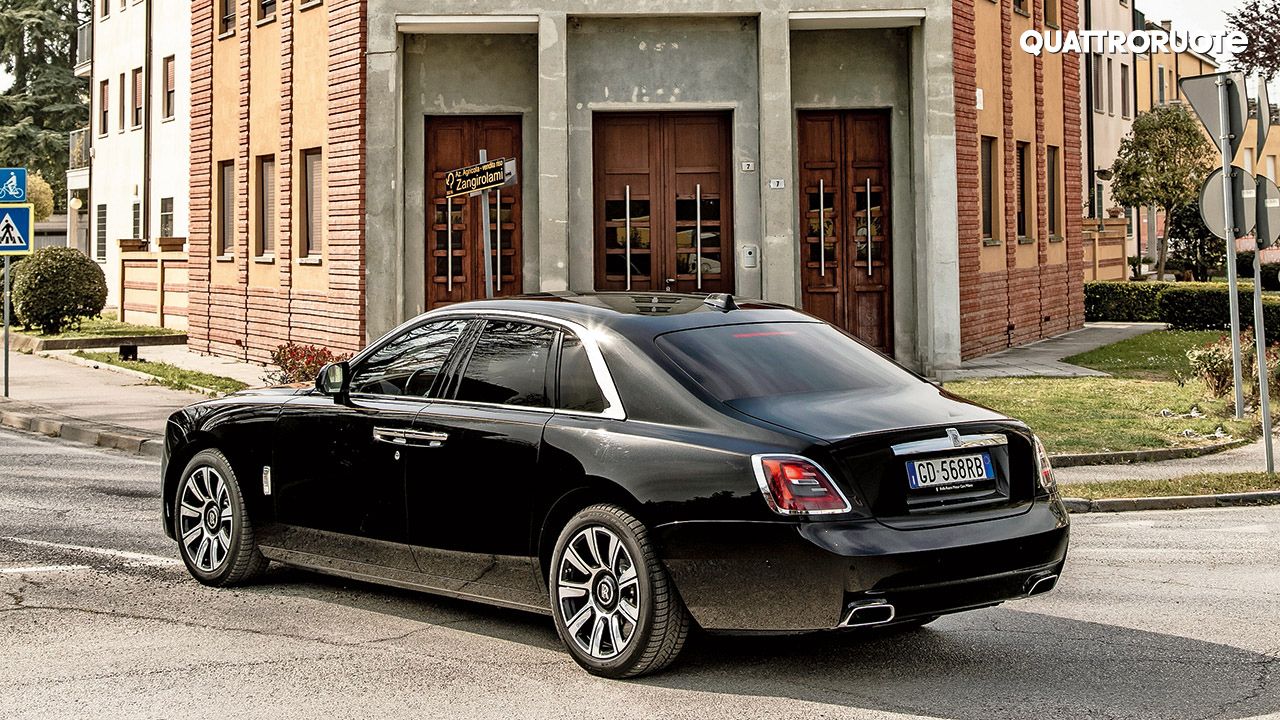
Now, in a world where supercars are moving towards the figure of 800bhp, 560 odd horses don’t seem to be an exceptional number. But what matters is the maximum torque – 850Nm, which is available at, wait for it, 1,600rpm, i.e., just 600rpm above idle. All this is put on the ground by the all-wheel-drive system, which in turn is activated by an eight-speed automatic transmission; the wheels are connected to the body through a double-wishbone suspension at the front and a multilink at the rear.
Perfect Balance
I know that it may seem like an exaggeration, but rarely have we had to deal with such a balanced vehicle. It’s not only the perfect harmony between performance, dynamism, and comfort that amazes you, considering the massive weight of the car, but also the fact that every single component, every single detail, comes together to offer an experience that’s really unforgettable, regardless of whether you are at the steering wheel or in one of the rear seats. And I’m not talking about the cooler with a wine bottle and glasses, the illuminated dashboard – it took 10,000 hours to backlit the word Ghost with 152 LEDs – or the starry sky visible only to those in the back, which is also a reminder that not everyone enjoys equal privileges. What I am talking about is its technical aspects. Take accelerator tip-in, for instance – to make sure that the car takes off without disturbing the occupants (after all, high-end chauffeurs attend schools especially to learn this difficult art) – the first few millimetres of the accelerator pedal travel can be modulated with a minimum amount of pressure.

Another example? The suspension’s calibration – something that’s now also available on medium-size cars – is fixed. An oversight, you ask? Absolutely not – the manufacturer decides the best setting so as to eliminate the chances of the driver jeopardizing the ideal set-up. And to dispel the suspicion that compromises must have been made in establishing the best setting, the British technicians have used the best technology available. First, they introduced a mass damper to the upper arms of the front wishbones to absorb movements and vibrations. And then, they added an active anti-roll bar at the rear, which communicates with the camera at the front of the car. If the camera sees an irregularity on the road, it instructs the rear suspension to soften in a few tenths of a second.
Apart from the suspension that has been made literally to glide on the road, the car has an additional 100kgs of soundproofing material, double glazing, a body structure with cavities on the floor and roof, and the original Pirelli equipment with PNCS technology, which provides an internal sponge to filter out the most annoying frequencies. All these features come together to offer a level of comfort that we have never experienced before. Frankly, it’s all very astonishing, given the fact that this field requires heavy investment even to achieve marginal gains.
Pure Dynamic Excellence
The V12 – it’s positioned between the two axles for perfect weight distribution, thanks to the enormous wheelbase – despite being an archetypal internal combustion engine, is paradoxically as close to an electric unit as an internal combustion engine can be. At idle you can’t feel it – at a standstill, you have to look at the residual energy meter, which on Rolls cars replaces the rev counter, to know that the engine is on. You don’t even feel gear changes. The transmission uses the sat-nav system that was first seen on the Wraith coupe – it communicates with the GPS system and selects gears based on road conditions. This engine loves to rev in a manner that’s linear and immediate, so much so that before you realize it, you find yourself crossing speed limits.
Now, it may sound like an exaggeration to talk about a car that’s five and a half meters long and weighs 2,500kgs in this way, but the Ghost’s best quality is that it feels very light, thanks also to the steering that is both soft and precise. Of course, if you want to go fast on a mountain road, you do get a feeling that Rolls cars are not born to indulge in certain exuberances; however, on the freeway, you find sense and meaning again, grinding out kilometre after kilometre in the most dynamic and comfortable way one can imagine.
Any flaws? The levers on the steering wheel, including the gear lever, are poor, which purists may find to be a reference to the past. And the folding doors that open electrically have a control that often acts up. Basically, minor issues that give this otherwise extraordinarily perfect machine, a product of exceptional calibre, a sense of reality. And yes, its price, of course.
THE GHOST VISITS THE IDEAL CITIES
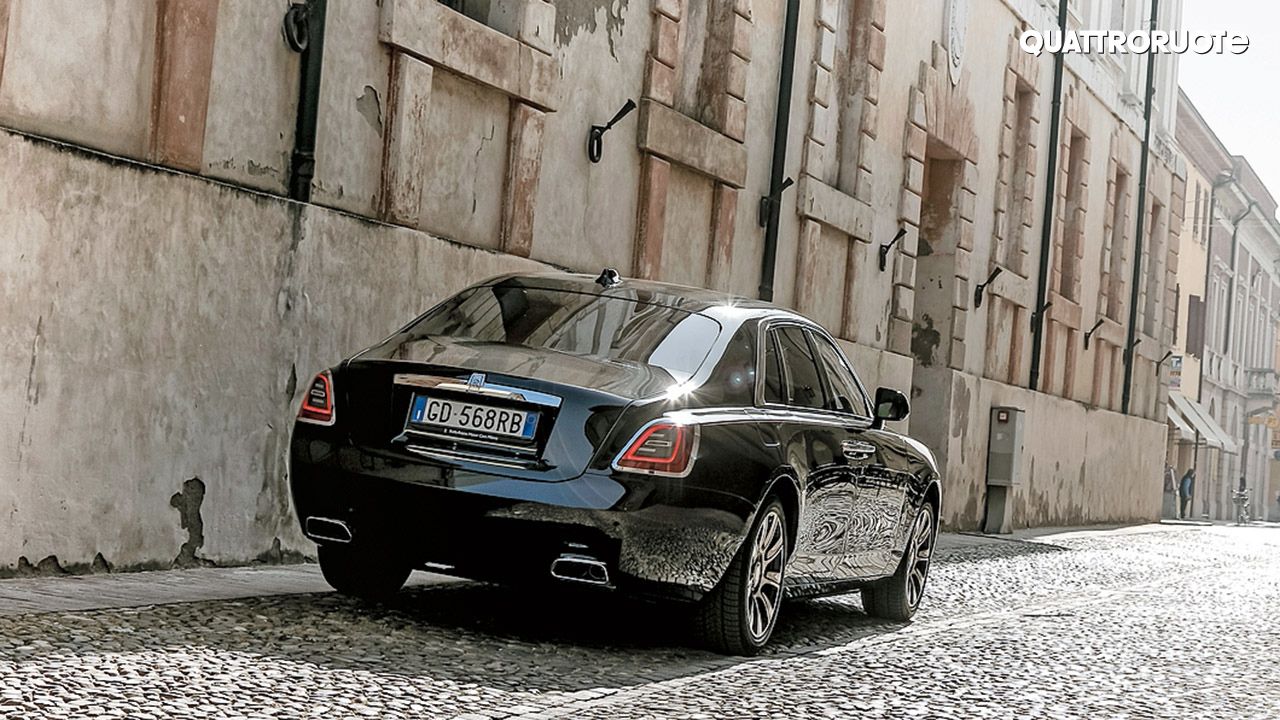
Sabbioneta – The Small Capital
Built by Duke Vespasiano Gonzaga between 1554 and 1591, Sabbioneta has been a UNESCO World Heritage Site since 2008 – a town that has been declared to possess ‘exceptional universal value’ because it represents a perfect manifestation of the Renaissance theories of an ideal city’s design. Defended by star-shaped walls, it was elevated, in 1577, to a duchy by Emperor Rudolph II. It has remained almost intact, including its orthogonal arrangement of streets.
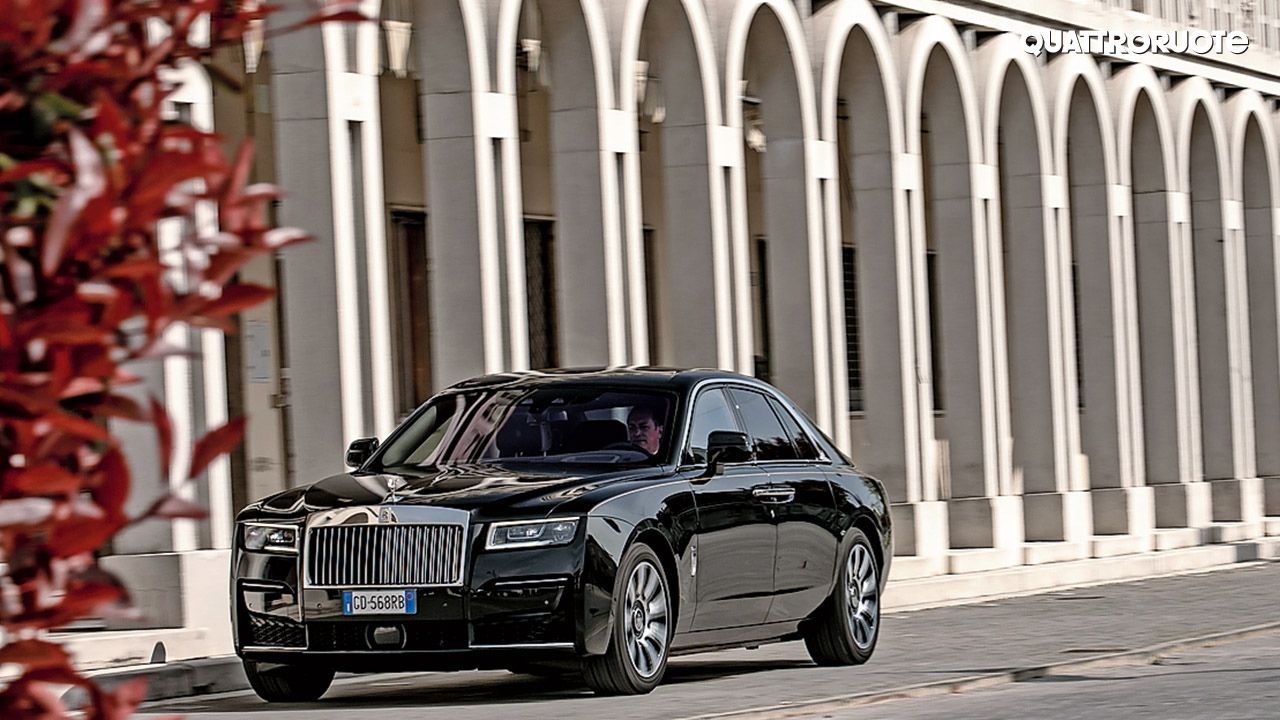
Tresigallo – A Minister's Vision
Tresigallo is one of the newly founded cities created in the 1930s. It was transformed by the then Minister of Agriculture and Forestry, Edmondo Rossoni, who was born in that remote village, east of Ferrara. Intent on creating a completely self-sufficient community, he built everything from scratch, using a rationalist approach and the theories of perspective and proportion.
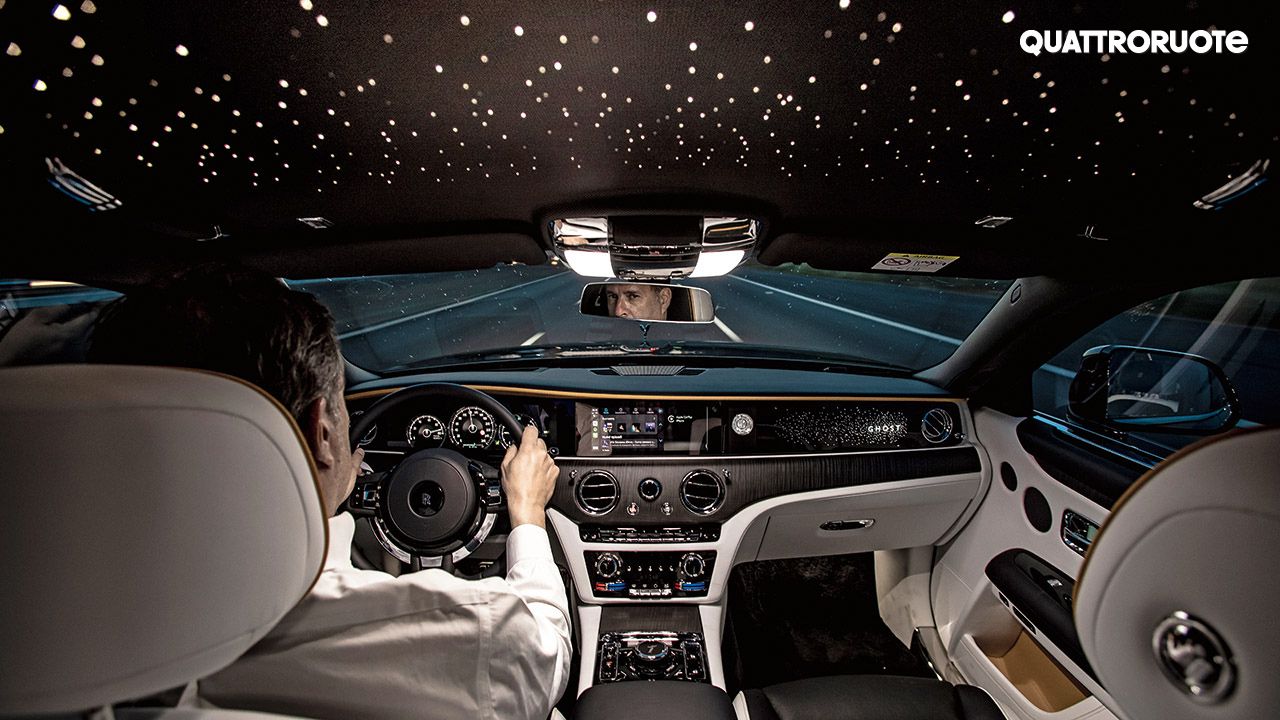
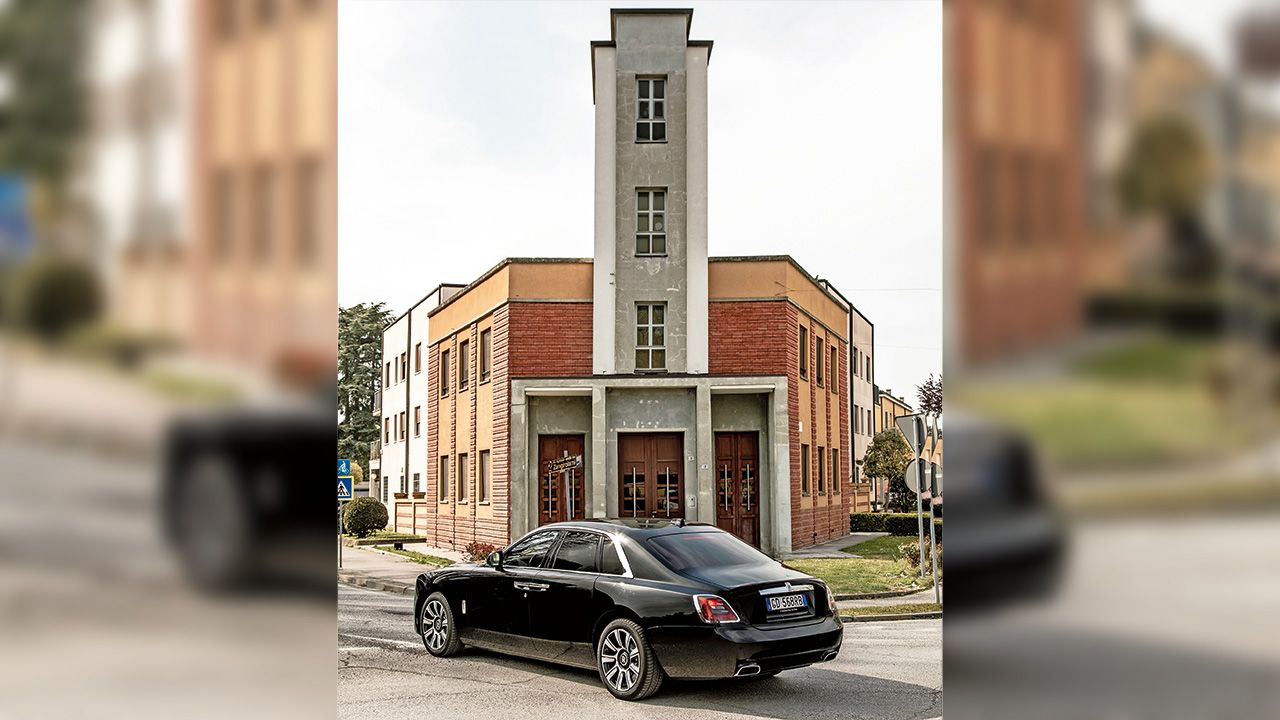
Above: The Domus Tua is one of the most significant buildings in Tresigallo, the province of Ferrara. Conceived as a party palace, it’s a perfect example of the rationalist architecture that Rossoni chose for this unusual community project inspired by the principles of German social urbanism of the 1930s. The drawings of all the buildings were made by the engineer Carlo Frighi, an employee of the Municipality of Tresigallo.
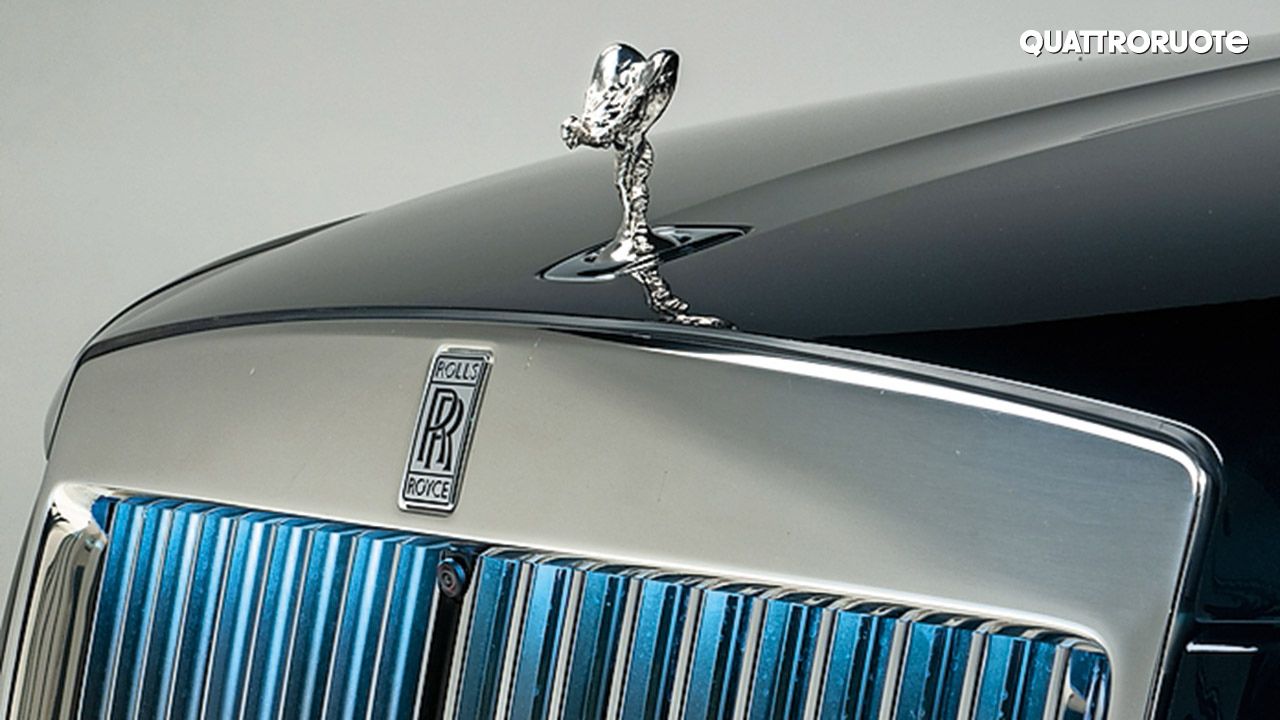 Illuminated grille (in Ghost pack) – €32,455 (₹28.88 Lakh)
Illuminated grille (in Ghost pack) – €32,455 (₹28.88 Lakh)
 Self-levelling wheel hubs – €1,073 (₹95,450)
Self-levelling wheel hubs – €1,073 (₹95,450)
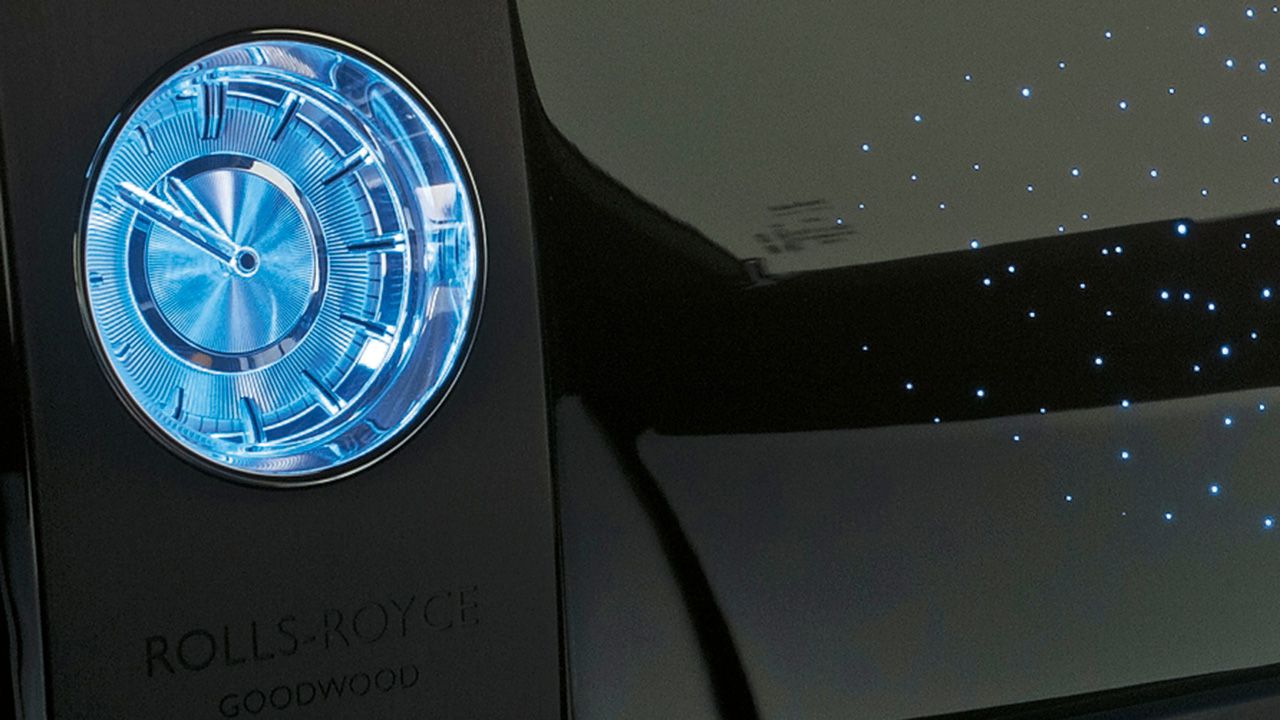 Technical bespoke clock – €5,998 (₹5.33 Lakh)
Technical bespoke clock – €5,998 (₹5.33 Lakh)
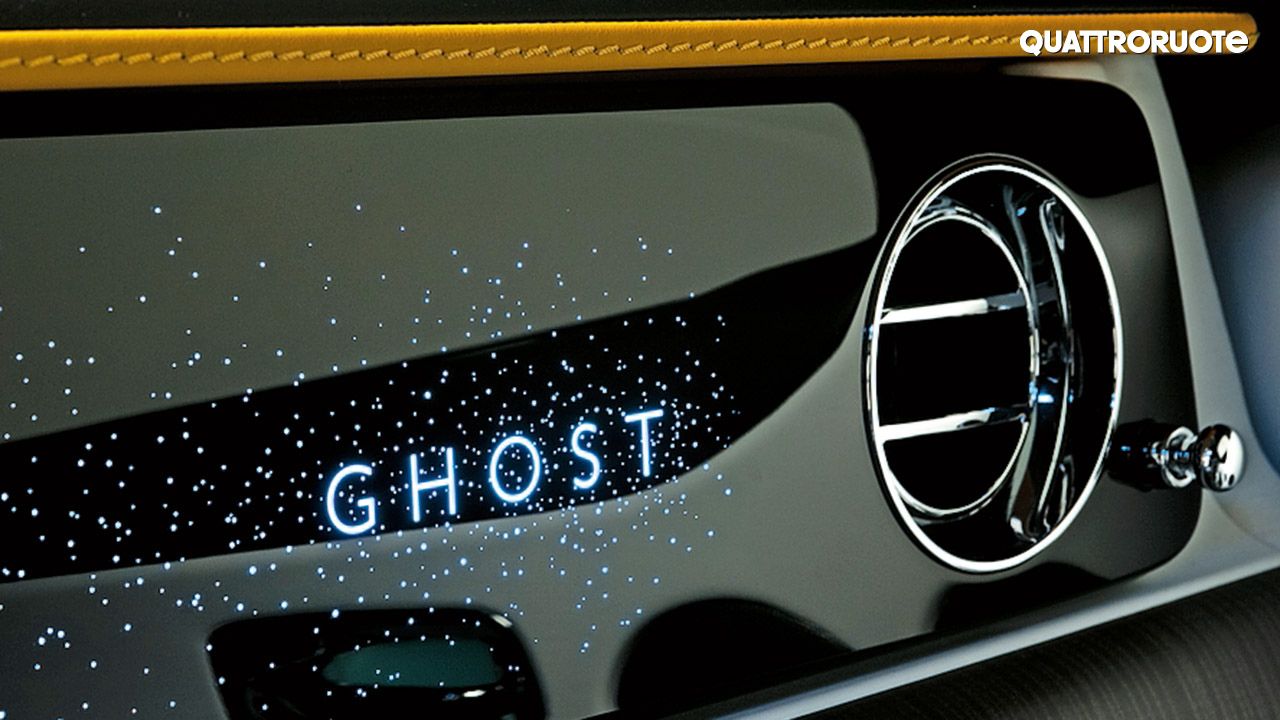 Backlit dashboard – €5,051 (₹4.48 Lakh)
Backlit dashboard – €5,051 (₹4.48 Lakh)
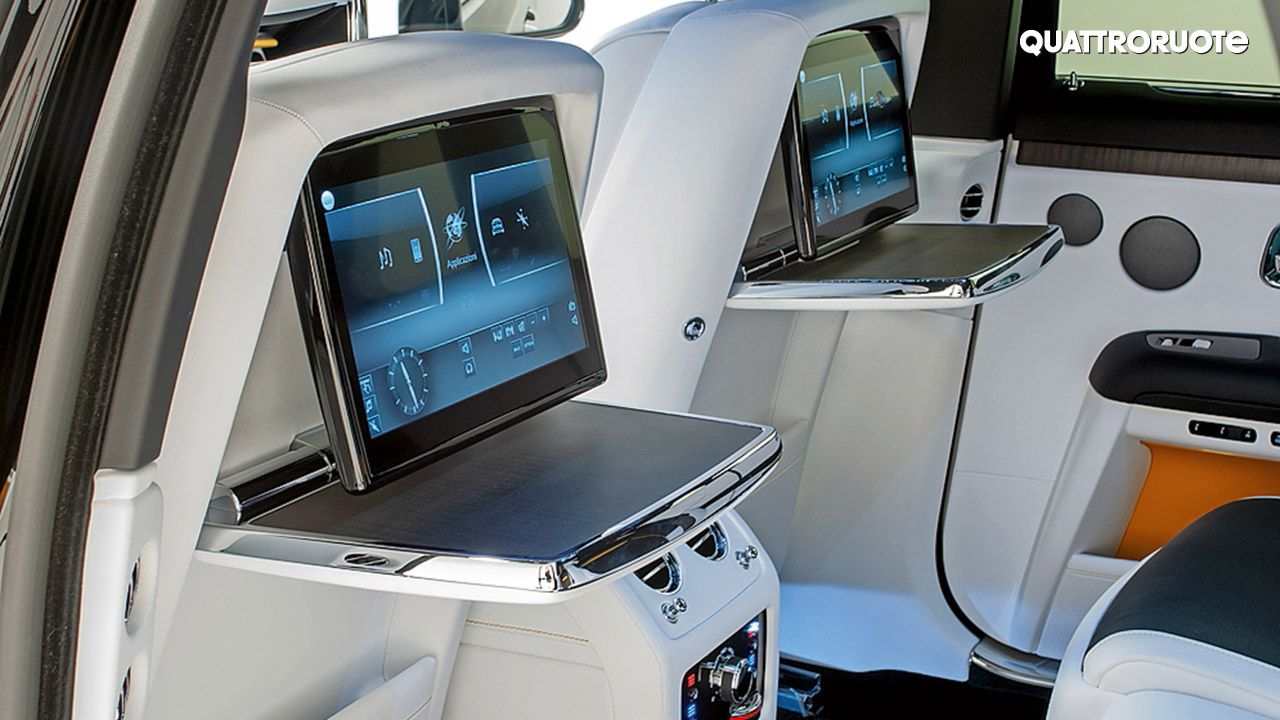 Picnic tables – €5,367 (₹4.77 Lakh)
Picnic tables – €5,367 (₹4.77 Lakh)
© Riproduzione riservata
Read more:
Engine
• Front Longitudinal
• Twin-Turbo petrol V12
• Displacement – 6,750cc
• Max Power – 563bhp at 5,000rpm
• Max Torque – 850Nm at 1,600rpm
Transmission
• All-Wheel Drive
• 8-Speed Automatic Transmission
Performance
• Max speed – 250km/h (limited)
• 0 - 100km/h – 4.8s
• Average consumption – 6.6km/l
Dimensions and Weight
• Wheelbase – 3,300mm
• Length – 5,550mm
• Width – 1,980mm
• Height – 1,570mm
• Weight – 2,565kgs
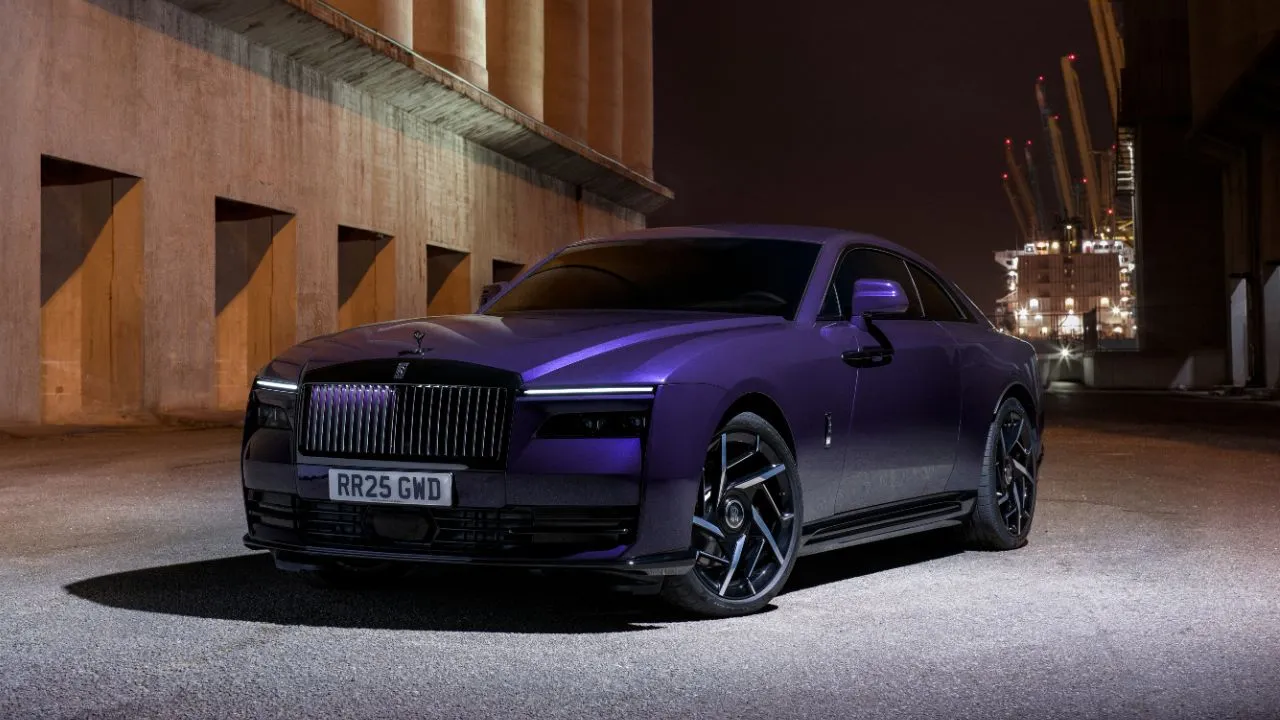

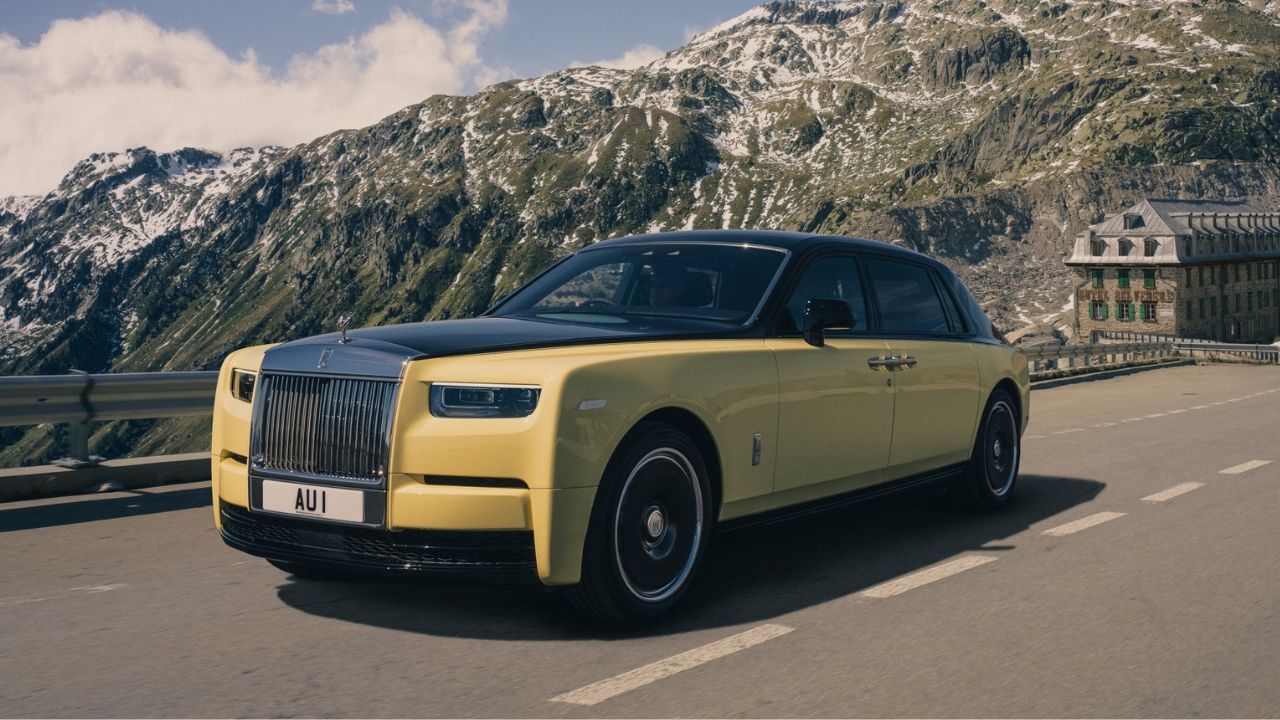
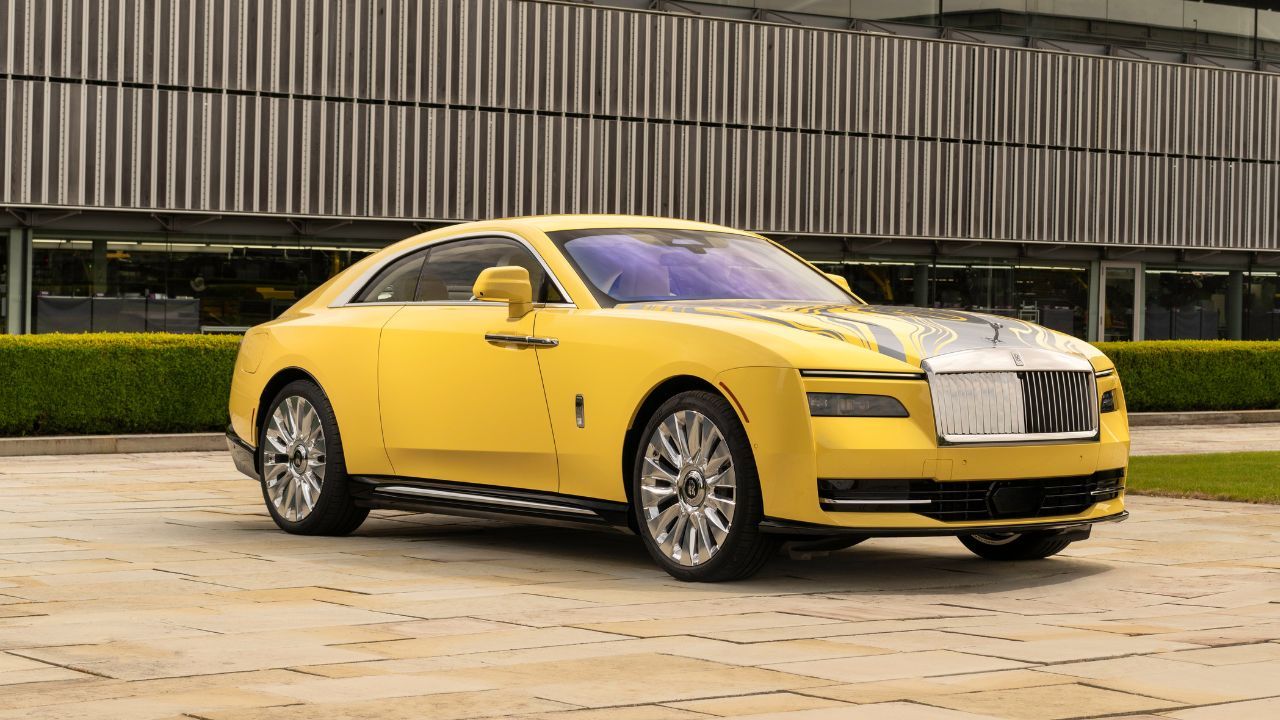
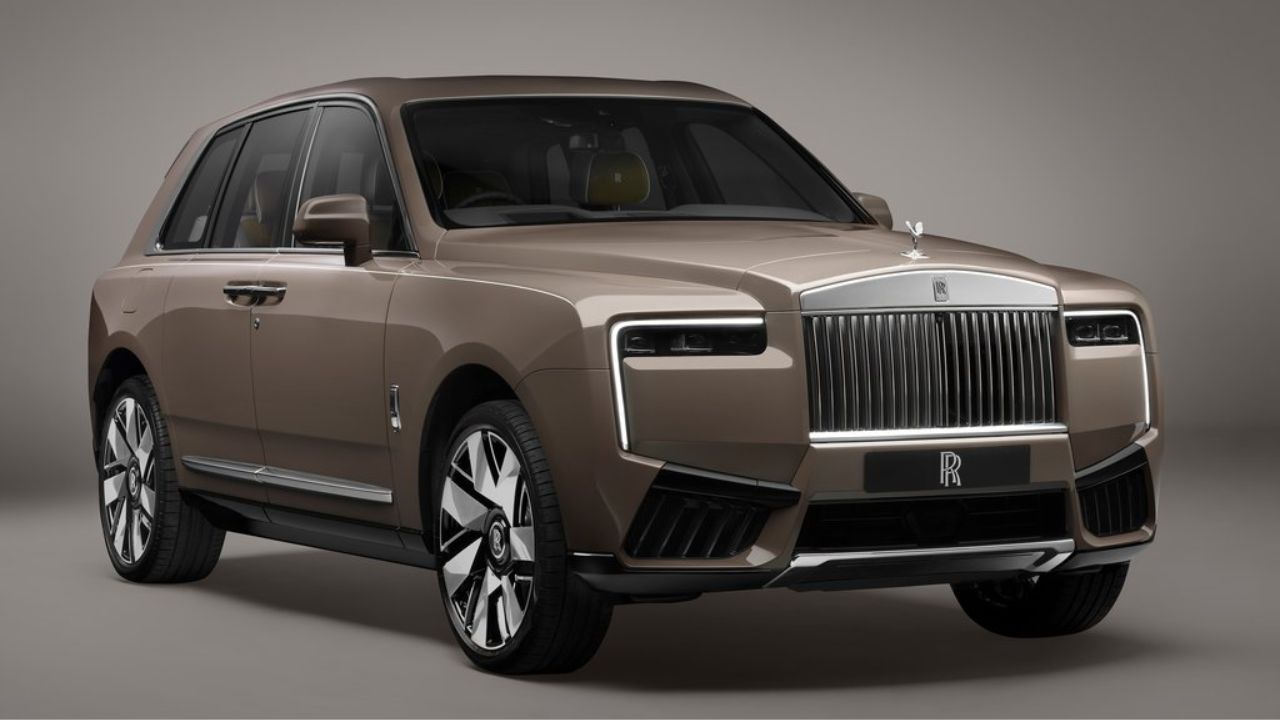
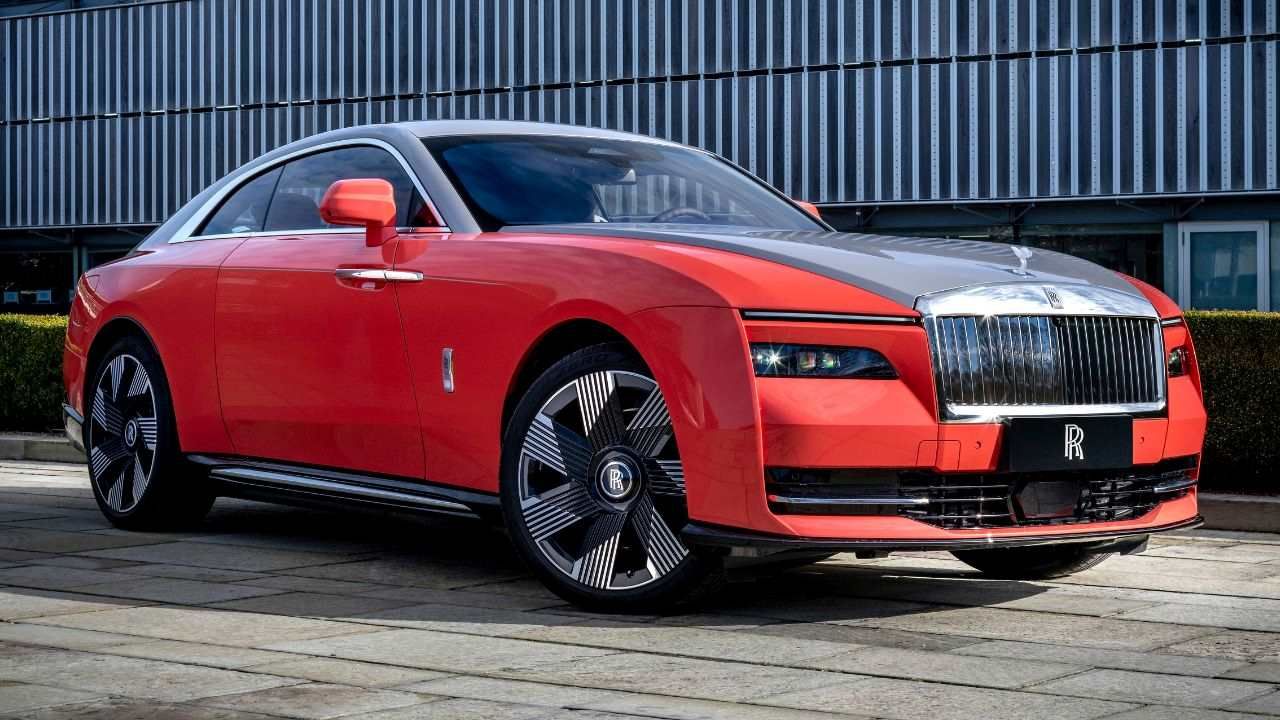





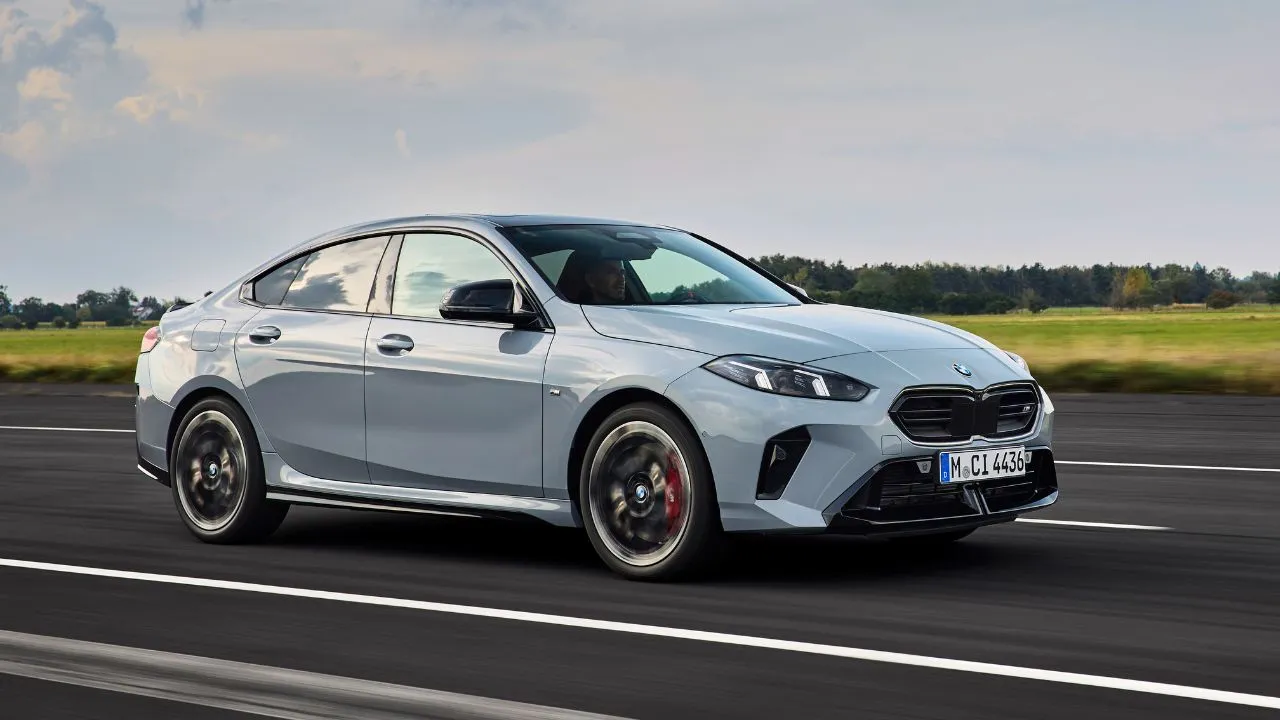

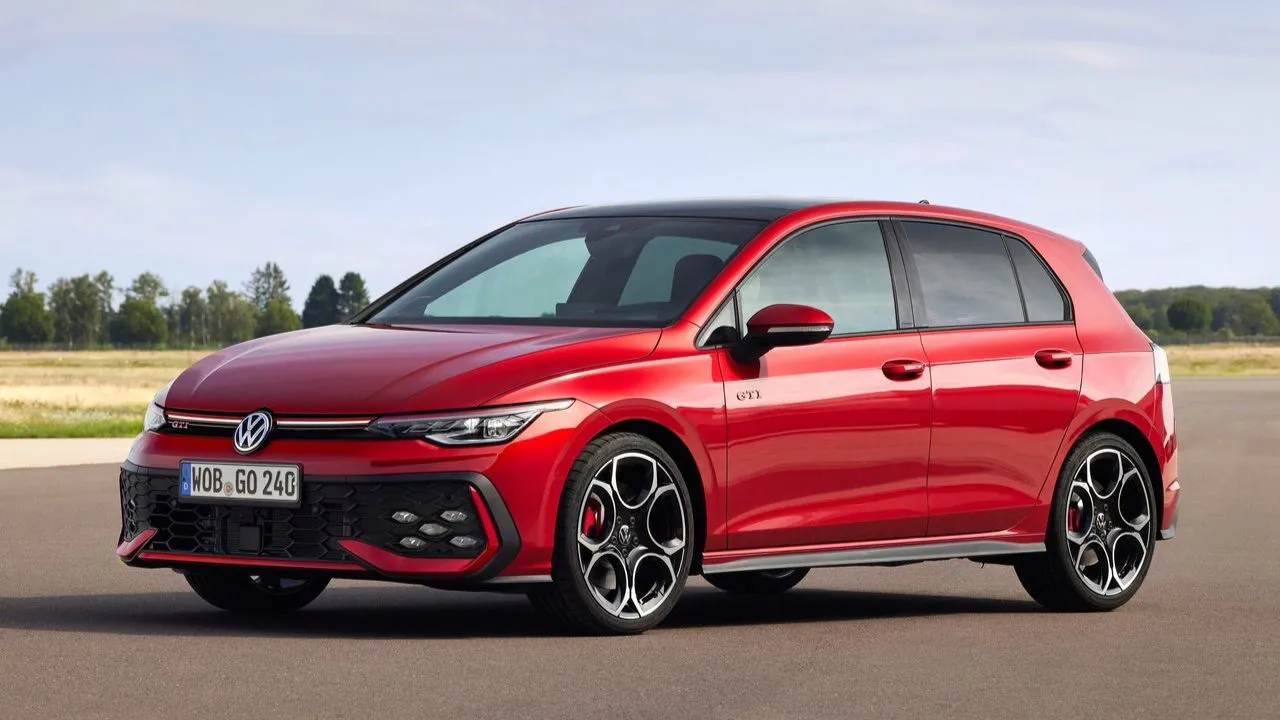
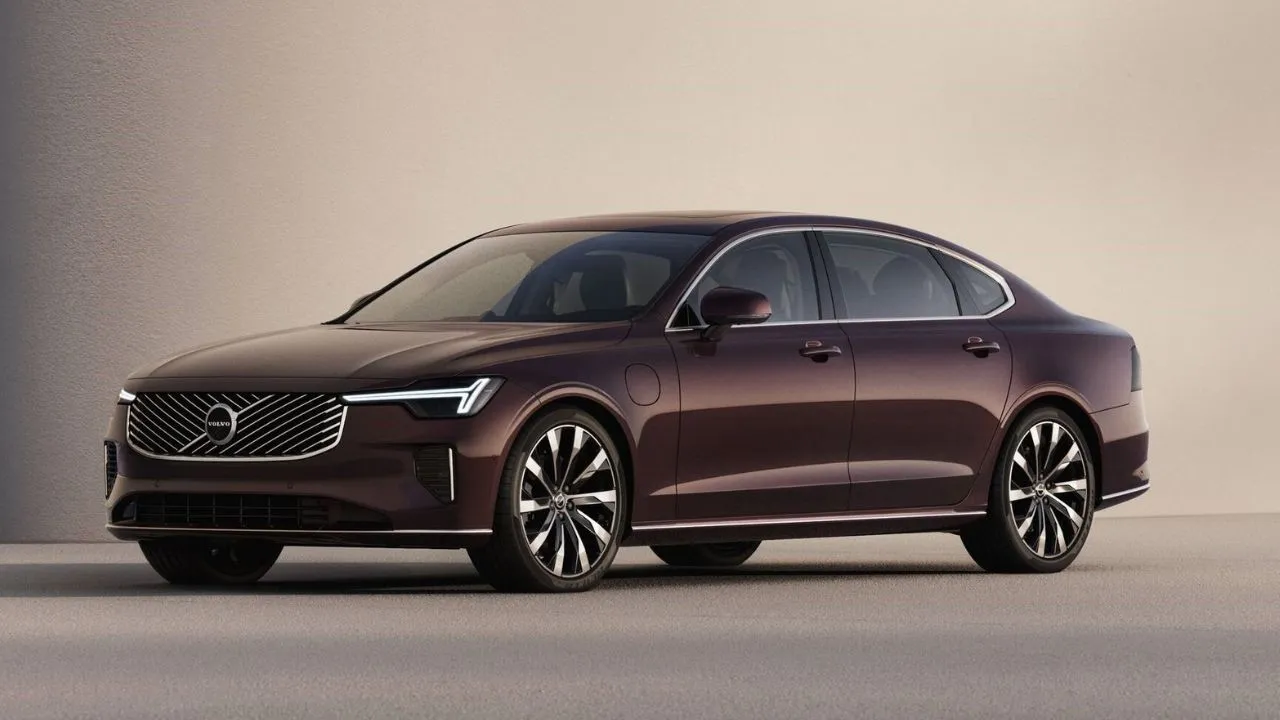

Write your Comment on